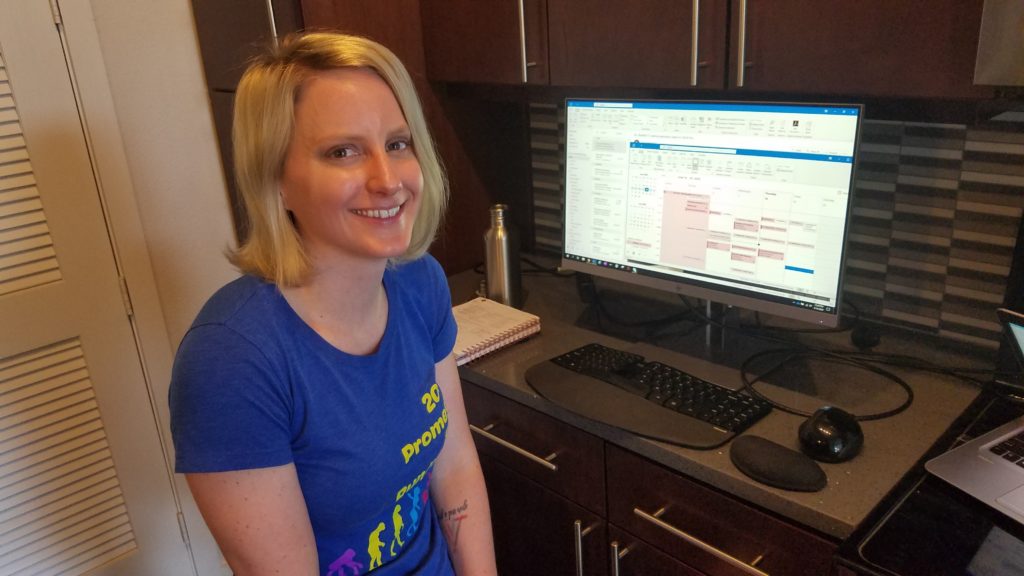Today’s blog is written by guest blogger, Erin Schuster, Quality Specialist at Promega.
Change is not easy. It can be challenging and even frustrating at times. Yet, the outcome of change can be incredibly beneficial and rewarding. As a result of the COVID-19 pandemic, many of us are finding ourselves in out-of-the-norm situations and circumstances. Change may be exactly what we need in order to adapt and move forward.

As a quality assurance specialist, I’m very familiar with the processes that can be associated with change. In order to make changes related to the design, manufacture or testing of medical devices and related products, an organization must have clearly defined expectations and instructions within Standard Operating Procedures. Procedures are a key component of the quality management system. Not only do they communicate best practices, but they’re required for compliance to applicable regulations and standards. These procedures, regulations, and standards help ensure products are safe, effective and of high quality.
Unlike changes to medical devices, the process to make life changes does not have a standard operating procedure. Best practices may vary from person to person. There are no regulations or standards to follow. Left to our own devices, we may procrastinate and never quite get around to making the change. Or if unsure of how to even begin, we may feel anxious and overwhelmed, giving up before even starting. I have experienced both scenarios and know I will again.
I am a quality assurance specialist, and I am also a human being. I have made many changes to myself and aspects of my personal life, as well as having supported many change orders and product changes throughout my career. Reflecting on these experiences, I realize there are universal themes within the change control process and change orders that can be extended to any kind of change.
At the beginning of quarantine, I was experiencing rather difficult emotions that I wished to address. In general terms, I wanted to reduce my anxiety, become more patient, and feel more connected. I developed a plan which included daily reflection and activities such as meditation, yin yoga, quiet walks, calling a family member or friend, as well as some healthy distractions, such as practicing my Spanish using a phone app, trying new recipes, and taking online classes. My planner was helpful for keeping organized and I got a sense of satisfaction from checking off items once completed.
Then just this past week, my husband and I hit a major milestone in our life change which involved relocating to Austin, Texas for my husband’s job. We sold our home in Oregon, Wisconsin and moved to an apartment in Austin. This ongoing change has numerous moving pieces and impacts many others besides us, including our cat who is terribly not fond of car rides.

The change order approach outlined below has been incredibly helpful with managing my difficult emotions during quarantine as well as relocation and all its complexity during the COVID-19 pandemic. Whether making a change to your life or plate reader, having a plan and defining actionable steps can help you achieve the results you’re looking for.
Start with the basics
Describe the desired change using a generalized, big picture statement. It can be helpful to compare the current state to the intended future state. Understand and clearly express why the change is being made. Be sure it’s okay to make the change and that it will not cause unwanted adverse effects.
Delve into the details
Identify the specific things or practices that are to be changed in order to facilitate the overarching change. Identify the specific changes to be made to these things or practices and connect them back to the overarching change. The use of visuals may aid in conceptualizing changes. Determine if the changes will impact other things, practices, or people; further actions may be necessary. Analyzing the specific changes in terms of form, fit, and function is useful for determining impact. Consult others as needed. Outside perspective and help from subject matter experts can be invaluable.
Write a plan
Documentation is critical and provides organization and structure. Include the basics, the details, and any required actions, including who will be performing them and when. Evaluate any factors that impact timing to determine when the changes should be made. Unlike the change orders I deal with at work, most life changes won’t require formal approval. However, it’s not a bad idea to run your plan past someone you trust or those who are directly affected.
Execute the plan
Complete the actions as outlined to implement the changes. Document and track progress. Keep to the timeline and provide regular updates to stakeholders. Hold the responsible parties accountable, even if that is yourself. Persistence and perseverance may be necessary. Along the way, the plan may need to change. Maybe it’s not working as intended or circumstances have changed. Flexibility is important. Any modifications to the plan should be thoroughly evaluated, justified, and documented.
Do a final check
Once the plan has been implemented, confirm that the desired changes were made. If so, excellent! Inform the stakeholders. If not, figure out why and repeat the process as needed. Keep a final record of the plan and the documentation of its execution. Looking back at previous changes are a helpful resource while working through new changes.
Conclusion
The framework outlined is intentionally flexible and provides general guidance and structure for making changes effectively. The inputs, outputs, and the actual process itself will depend on the change and who is making it. Applying this framework ensures changes are well thought out, planned, and accomplished.

Erin is a Quality Assurance Specialist at Promega and manages the change control system for instrumentation. She earned her B.S. in Chemistry and Biochemistry at the University of Wisconsin-Madison. After starting her career in a laboratory making active pharmaceutical ingredients, she ventured into quality assurance for the pharma industry, and later expanded into biotech. In her free time, you may find Erin upside down while practicing aerial fitness or right-side up while writing, traveling, enjoying nature, and dabbling in artistic endeavors.
Related Posts
Latest posts by Promega (see all)
- One Health and H5N1: Promega’s Commitment to Holistic Solutions - April 8, 2025
- Overcoming qPCR Inhibitors: Strategies for Reliable Quantification - March 13, 2025
- Celebrating Creativity and Innovation: The 2025 Promega Employee Art Showcase - February 4, 2025

One thoughtful comment